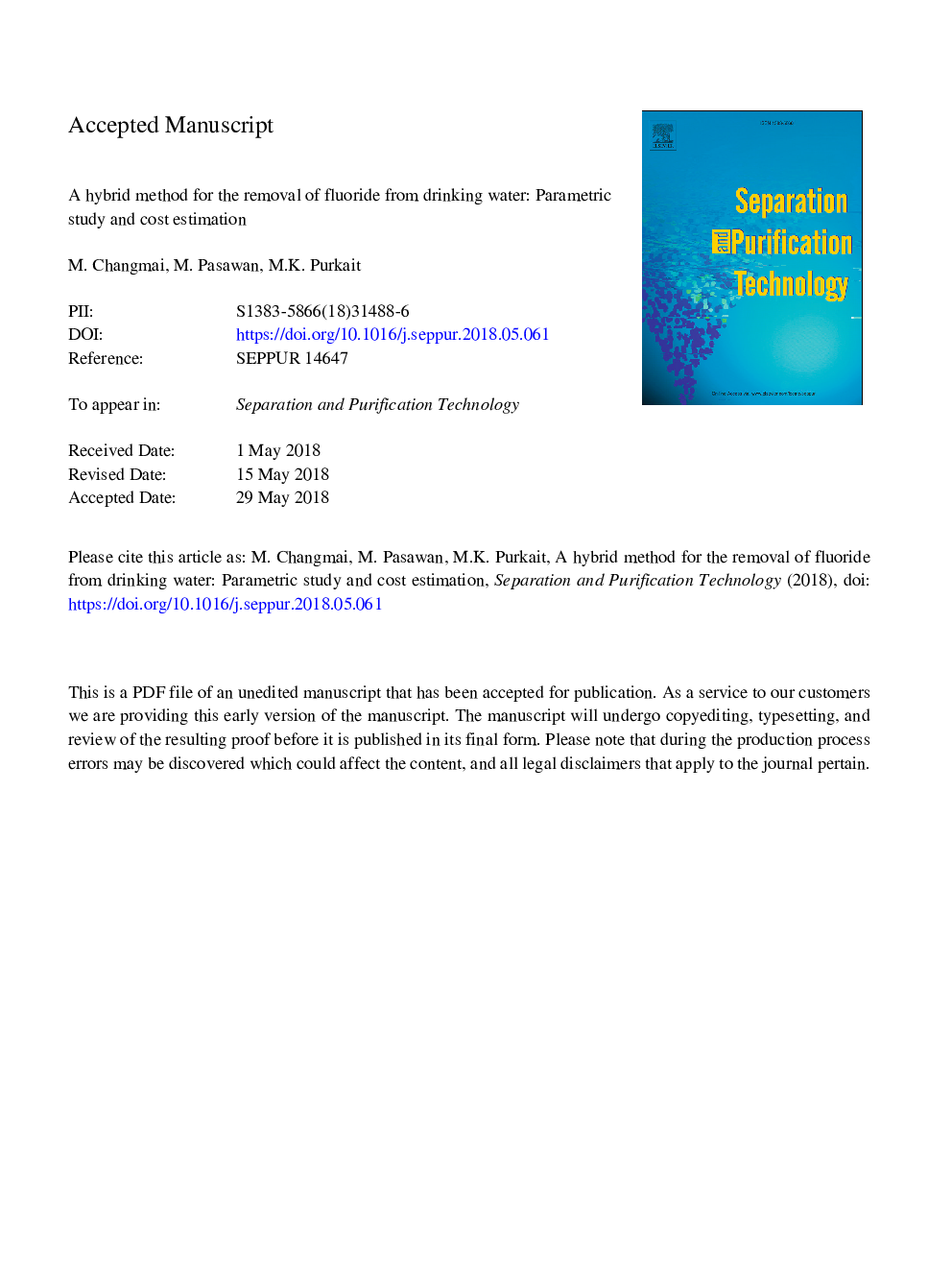| Article ID | Journal | Published Year | Pages | File Type |
|---|---|---|---|---|
| 7043582 | Separation and Purification Technology | 2018 | 40 Pages |
Abstract
A hybrid technique (electrocoagulation followed by microfiltration) was utilized for an efficient defluoridation of contaminated drinking water. Three samples of drinking water with an initial fluoride concentration of 7.89, 4.79 and 1.78â¯mg/L were collected from a hand tube well located in Karbi Anglong district of Assam, India. Effects of different operational parameters such as initial fluoride concentration, current density and pH on the removal of fluoride were extensively investigated in the electrocoagulation chamber. For a current density of 15â¯A/m2 and an electrode distance of 0.005â¯m, an efficient removal of 0.0097, 0.335 and 0.656â¯mg/L was observed for initial fluoride concentration of 1.78, 4.79 and 7.89â¯mg/L, respectively. The uptake of fluoride was the highest at pHâ¯=â¯7.9 with a final fluoride concentration of 0.43â¯mg/L. Filtration studies were performed using indigenously prepared membrane. An increase in flux from 7.98â¯Ãâ¯10â5 to 19.19â¯Ãâ¯10â5â¯m3/m2â¯s was observed with an increase in transmembrane from 196 to 509â¯kPa. Produced flocs were scraped from the membrane surface, dried and characterized to confirm the presence of fluoride. The proposed hybrid technique was able to lower the concentration of fluoride from contaminated drinking water within the permissible limit as per WHO of 1.5â¯mg/L.
Related Topics
Physical Sciences and Engineering
Chemical Engineering
Filtration and Separation
Authors
M. Changmai, M. Pasawan, M.K. Purkait,
